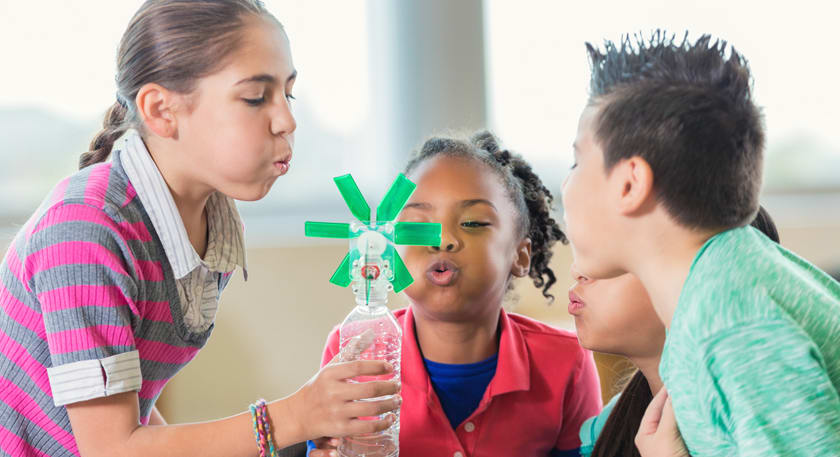Fun Science Activities to Celebrate the New Year

Elementary School and Middle School
Are you looking for some science activities to help students ring in the new year with a smile? Let us share a few picks; an old and then a new pick; they’re very versatile!
Fireworks, it’s not rocket science.
Noisemaking and fireworks on New Year’s Eve is believed to have originated in ancient times when people thought noise and fire could dispel evil spirits and bring good luck.1 Since fireworks originated in China, it’s no surprise that the most fireworks in the world are set off there during the New Year's celebrations.2
The curious minds in your class may wonder why some fireworks boom, some whistle, and others crackle? What creates the dazzling red, orange, yellow, green, blue, and purple hues exploding in the skies? In a previous post, Red, white and boom! How fireworks work, we explored the chemistry behind the beautiful colors and booming sounds of fireworks.
Your students will explode with delight when introduced to chemical reaction types with Ward's® Chemistry Forming Red, White and Blue Demonstration.
This colorful demonstration illustrates complex ion formation, double replacement reaction, and Prussian blue. Three reactions are carried out in adjacent beakers resulting in red, white, and blue solutions. This activity is a surefire way to help students pass your class with flying colors!
Easy, Engaging, STEM Confetti Activity
In 1875, Enrico Mangili invented confetti when he took punched-out pieces of paper leftover from silkworm bedding devices. Confetti was first used in a New Year’s celebration in Paris, France, in 1885. Today, New Year’s Eve wins the crown for the holiday with the most confetti thrown. At Times Square in New York City, 1.5 tons (30,000,000 pieces) 3 of confetti is thrown as the ball drops.
Before the New Year’s Day countdown begins, you can use this exciting and easy confetti activity to demonstrate simple chemical reaction concepts. This fun activity uses common household items so that students can do it at home just in time for the New Year celebration (with parents’ permission, of course).
Materials: Baking Soda, Vinegar, Water, Confetti, Plastic Cups, Eye dropper, or Turkey Baster.
Procedure:
- Make a simple and colorful baking soda dough.
- Mix 2 cups of baking soda with a good handful of confetti, sequins, or glitter.
- Slowly add in water to form a crumbly but somewhat packable dough
- Set up your plastic cups in a shallow tray or bowl (to prevent a mess when the confetti eruption begins).
- Scoop a 1/4-1/3 cup of your mixture into the party glass.
- Pour some of the vinegar in a bowl so you can easily draw it up with the baster or eyedropper.
Tip: The turkey baster can hold more of the vinegar so that the chemical reaction will be more dramatic.
The bubbling, fizzing, color confetti eruption will surely get a lot of oohs and aahs from the crowd! Just in time to rock in the New Year!
Questions? Our team can help you find the right products that meet your science standards, recommend which products to use for a particular lab activity, demonstrate how to use a product, and much more.
Email sciencehelp@vwr.com .
References: 1. Infoplease.com 2. China Highlights: 22 Facts about Chinese New Year You Should Know 3. 6SQFT: New Year’s Eve in numbers: Fun facts about the Times Square ball drop, 2019 Diane Pham.
